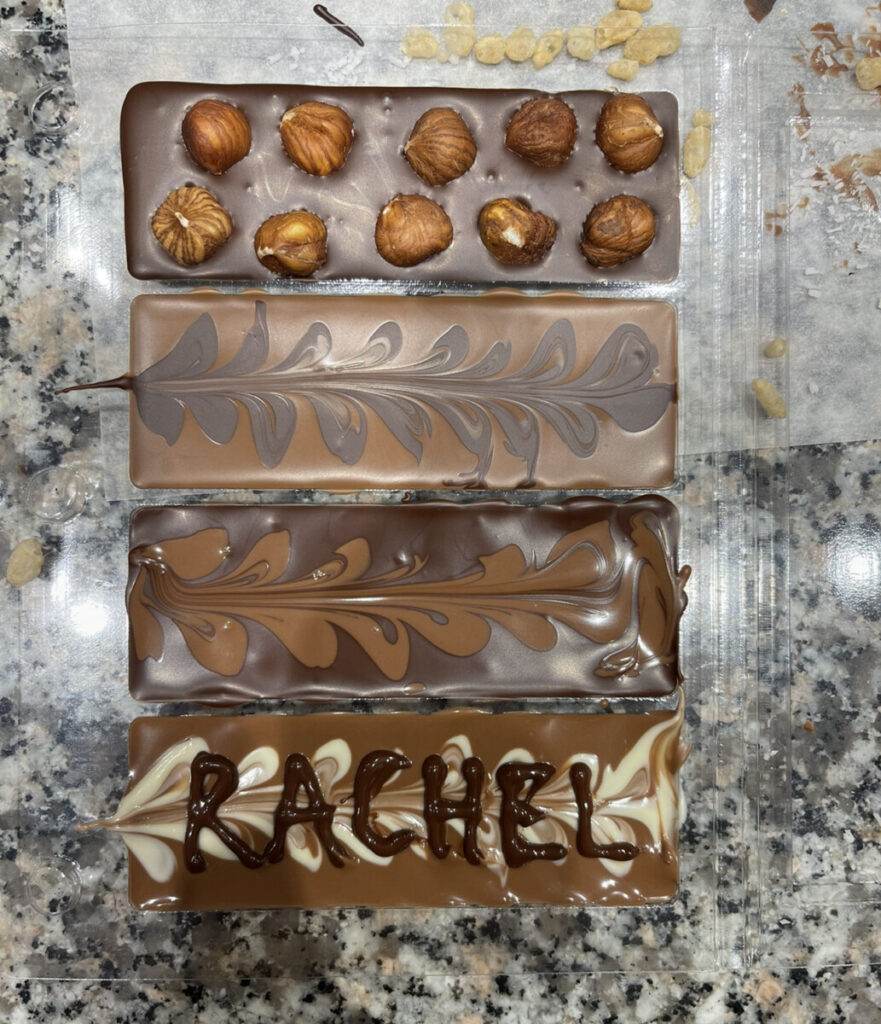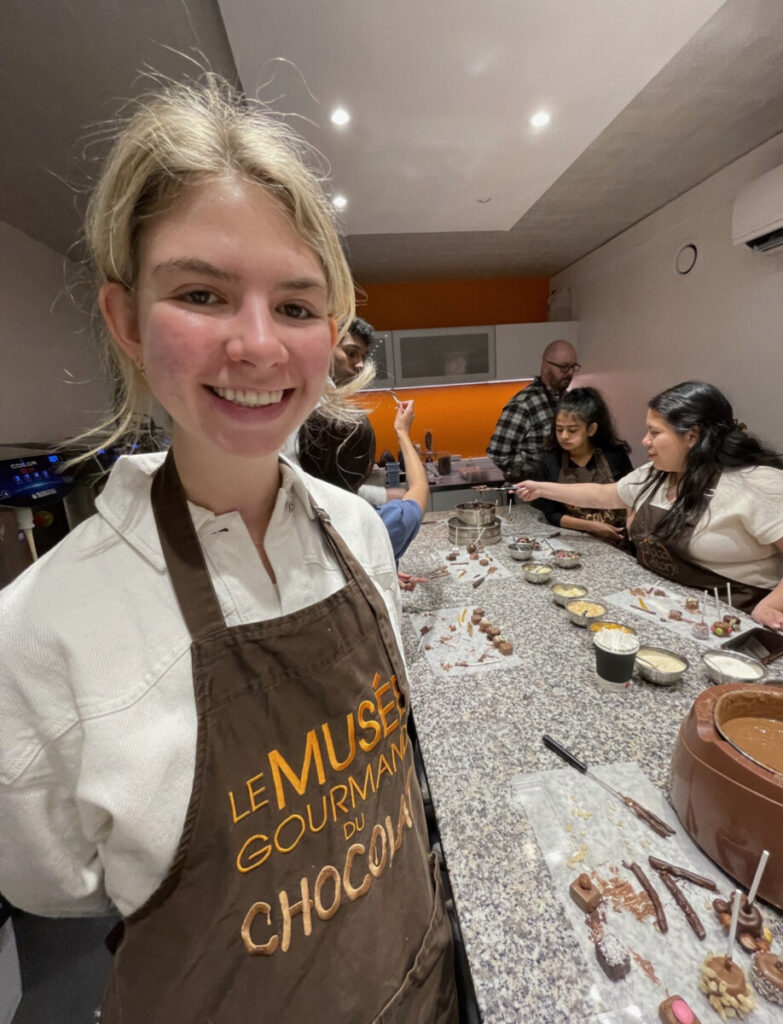The other day, our class visited a chocolate museum/ factory called Le muse gourmand du chocolat in the 10tharrondissement. The museum was in a very hip and up-and-coming neighborhood with lots of great restaurant options and young people. Upon entering the museum, the smell of chocolate flooded my senses and instantly made my mouth water. I couldn’t wait to make my own chocolate!
On our way down to the basement where the pastry chef was waiting for us, we saw beautiful and intricate sculptures made of chocolate, including the Eiffel Tower! I was very impressed and couldn’t wait to try out my hand at chocolate making and decorating. In the room, there was a large table with marshmallows, orange peels, and chocolate blocks for us to cover in chocolate and decorate. The pastry chef provided us with milk chocolate, dark chocolate, and white chocolate — I liked the milk chocolate best! I enjoyed adding hazelnuts and coconut flakes to the chocolate dipped marshmallows. It was my first-time trying chocolate covered orange peels, as well, and I discovered that those are not my favorite.
We also made our own chocolate bars. The pastry chef taught us how to add designs to the chocolate bar by combining the different types of chocolate. My favorite design was the “latte art flower”. This was done by covering the mould in a singular type of chocolate, such as milk chocolate, and then a horizontal strip of a different type of chocolate was added to the middle of the mould. A toothpick was used to create an up and down swirl pattern, and once I got to the end, I dragged a straight line in the middle back to the beginning of the bar. The result can be seen in the picture below!

Not only was this a very fun experience, but I was also able to understand the cognitive and mood enhancing effects of chocolate firsthand! Many studies have been performed to look at the cognitive effects of chocolate, and when researching the topic, I came across an interesting study that used Steady State Probe Topography (SST), a technique I have not learned a lot about. This technique was used to evaluate neurocognitive changes in response to cocoa flavanols during a spatial working memory task. SST is associated with activity cortico-cortico and thalamo-cortical loops of the brain. The study found that there was a correlation between increased neural efficiency and the cocoa flavanol consumption in the spatial working memory task (Camfield et al., 2012).

Reference:
Camfield, D. A., Scholey, A., Pipingas, A., Silberstein, R., Kras, M., Nolidin, K., Wesnes, K., Pase, M., & Stough, C. (2012). Steady state visually evoked potential (SSVEP) topography changes associated with cocoa flavanol consumption. Physiology & behavior, 105(4), 948–957. https://doi.org/10.1016/j.physbeh.2011.11.013
